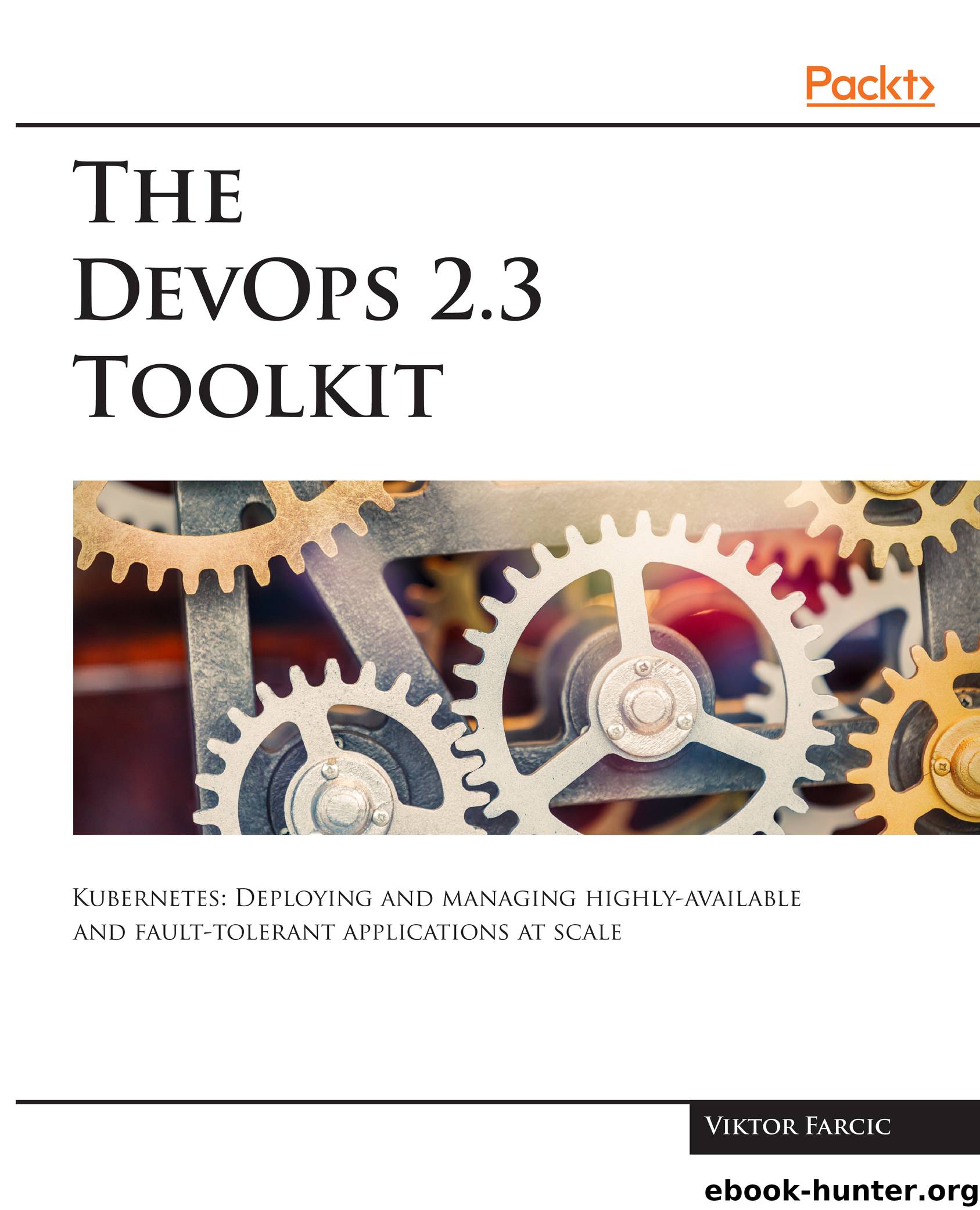The DevOps 2.3 Toolkit by Viktor Farcic

Author:Viktor Farcic
Language: eng
Format: epub
Publisher: Packt Publishing
Published: 2018-09-13T10:08:53+00:00
Secrets compared to ConfigMaps
So far, Kubernetes Secrets do not seem to differ from ConfigMaps. From a functional perspective, they are, indeed, the same. Both allow us to inject some content. Both can use files, literal values, and files with environment variables as data sources. Both can output data into containers as files or as environment variables. Even the syntax for using Secrets is almost the same as the one used for ConfigMaps.
The only significant difference between ConfigMaps and Secrets is that the latter creates files in a tmpfs. They are constructed as in-memory files, thus leaving no trace on the host's files system. That, in itself, is not enough to call Secrets secure, but it is a step towards it. We'd need to combine them with Authorization Policies to make the passwords, keys, tokens, and other never-to-be-seen-by-publicly types of data secure. Even then, we might want to turn our attention towards third-party Secret managers like HashiCorp Vault (https://www.vaultproject.io/).
Secrets are almost the same as ConfigMaps. The main difference is that the secret files are created in tmpfs. Kubernetes secrets do not make your system secure. They are only a step towards such a system.
Download
This site does not store any files on its server. We only index and link to content provided by other sites. Please contact the content providers to delete copyright contents if any and email us, we'll remove relevant links or contents immediately.
Deep Learning with Python by François Chollet(14616)
The Mikado Method by Ola Ellnestam Daniel Brolund(11877)
Hello! Python by Anthony Briggs(11791)
OCA Java SE 8 Programmer I Certification Guide by Mala Gupta(11240)
Dependency Injection in .NET by Mark Seemann(11001)
Algorithms of the Intelligent Web by Haralambos Marmanis;Dmitry Babenko(9832)
The Well-Grounded Java Developer by Benjamin J. Evans Martijn Verburg(9420)
Grails in Action by Glen Smith Peter Ledbrook(9165)
Secrets of the JavaScript Ninja by John Resig Bear Bibeault(8594)
Test-Driven iOS Development with Swift 4 by Dominik Hauser(8309)
Becoming a Dynamics 365 Finance and Supply Chain Solution Architect by Brent Dawson(7997)
Microservices with Go by Alexander Shuiskov(7763)
Practical Design Patterns for Java Developers by Miroslav Wengner(7657)
Test Automation Engineering Handbook by Manikandan Sambamurthy(7610)
Kotlin in Action by Dmitry Jemerov(7264)
Angular Projects - Third Edition by Aristeidis Bampakos(7089)
The Art of Crafting User Stories by The Art of Crafting User Stories(6552)
NetSuite for Consultants - Second Edition by Peter Ries(6482)
Demystifying Cryptography with OpenSSL 3.0 by Alexei Khlebnikov(6257)
